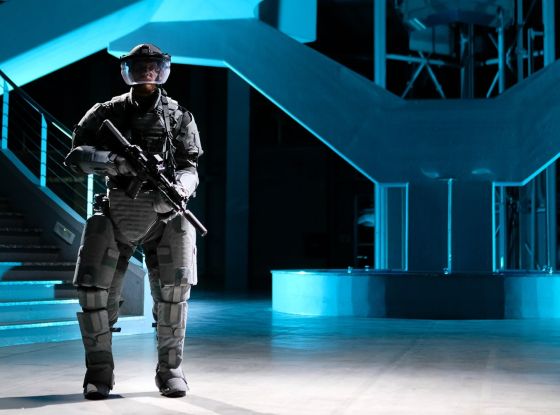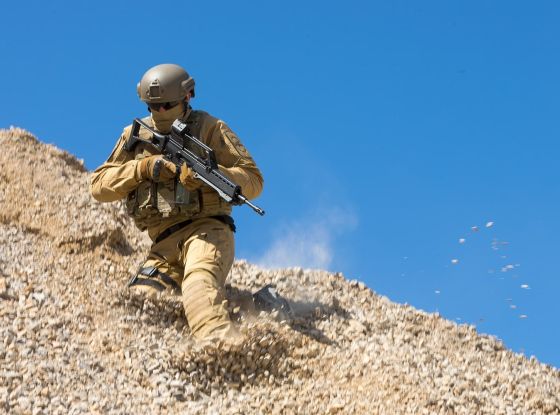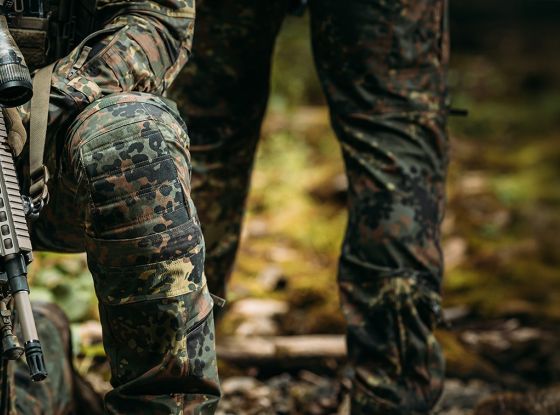When you're out in the field, the gear you wear helps keep you comfortable, efficient, and ready to respond to any situation. Tactical operators in military and law enforcement face varied and extreme conditions, where choosing between one-piece coveralls, overalls, and two-piece suits can mean the difference between success and failure. How do you decide which works best for your mission when it's not mandated? Let's explore a comprehensive breakdown of the pros, cons, and use cases for each.
In this blog post:
Why Tactical Protective Suits Matter
In tactical operations, your gear needs to keep up with your movements. It needs to shield you from environmental hazards, and integrate seamlessly with your other equipment. Tactical suits serve as a critical component in this equation, offering varying levels of coverage, adaptability, and resilience depending on your operational needs.
How the Decision Is Made
- Risk Assessment: Deciding on a type of suite must be part of your environmental hazards risk assessment (e.g., chemicals, fire, physical risks).
- Mission Requirements: Understanding the unit objectives and individuals tasks that will be performed (e.g. operator, gunner).
- Policy Alignment: Following SOPs, safety regulations, or organizational policies.
- Operator Feedback: Considering the experience and preferences of those wearing the gear.
SUBSCRIBE TO UNLOCK OUR EXCLUSIVE CONTENT
Enter your email and get timely updates and relevant intel on tactical topics directly to your inbox.
You are signing up to receive updates via e-mail from which you can opt out at any time. Visit our privacy policy for more info.
Coveralls, Overalls, and Two-Piece Tactical Suits
Each type of tactical garment has its own design philosophy, tailored for specific scenarios. Coveralls are about full-body protection, overalls prioritize freedom of movement, and two-piece suits focus on adaptability and ease of use. Let’s examine what sets them apart.
Tactical Coveralls
Think of coveralls as the all-in-one solution for situations demanding maximum protection. Coveralls, also known as army jumpsuits are a single-piece garment designed to cover you from neck to ankle. They come with reinforced seams and closures to prevent exposure to the elements.
-
WHO ARE THEY FOR
Military coveralls (FW and RW pilots/crews & tank crews and maintenance) are a go-to for operators in hazardous environments—HAZ-MAT teams, bomb disposal experts, and CBRN (Chemical, Biological, Radiological, Nuclear) units. If you’re dealing with chemical agents, flame hazards, or contaminated areas, coveralls are your first line of defense.
-
WHAT MAKES THEM SPECIAL
The continuous design ensures no gaps between upper and lower body coverage. High-end coveralls feature flame-retardant materials like Nomex or chemically resistant fabrics. These suits often include gas-tight closures for situations where every breath of clean air counts.
-
THE DOWNSIDE
Mobility and ventilation can be issues. Coveralls can restrict your movement and become uncomfortable in warm climates. Making them less practical for long-term wear in dynamic scenarios.
Tactical Overalls
Overalls offer a hybrid solution, protecting the lower body and torso while leaving the arms free. They’re lightweight, flexible, and designed for operators who need both protection and freedom of movement.
-
WHO ARE THEY FOR
Mechanics, engineers, and aircraft crews swear by overalls. They’re ideal for situations where mobility trumps full-body protection. Such as vehicle maintenance or logistical support in the field.
-
WHAT MAKES THEM SPECIAL
Overalls are designed for comfort and layering. Their sleeveless design allows for unrestricted arm movement, making them great for tasks requiring precision or physical exertion.
-
THE DOWNSIDE
They’re not a comprehensive protective solution. In environments with extreme risks—chemical exposure, fire, or heavy debris—overalls fall short.

Two-Piece Tactical Suits
Two-piece tactical suits, consisting of a jacket and pants, are arguably the most versatile option. They’re widely used in military and law enforcement operations, offering a balance of protection, comfort, and practicality.
-
WHO ARE THEY FOR
Military ground forces, Law Enforcement special forces teams, and patrol officers frequently use two-piece suits. They’re favored by Special Forces and reconnaissance teams who operate in dynamic and unpredictable conditions. There is also a trend emerging where RW crews are going for two-piece suits as they have a need from them when it comes to SERE operations.
-
WHAT MAKES THEM SPECIAL
The modular nature of two-piece suits allows you to tailor your gear to the mission. Need more ventilation? Remove the jacket. Facing colder weather? Layer up with thermal undergarments. The separate components make it easier to adjust for different climates, carry extra gear, or replace a damaged piece without scrapping the entire uniform.
-
THE DOWNSIDE
While versatile, two-piece suits may not provide the seamless protection of coveralls. In high-risk environments, they require additional layers or equipment to close the gap in coverage.

How to Choose the Suit Type
As someone who wears these suits in the unforgiving environments of military operations, think that the gear you choose is more than just a tool—it’s your lifeline. The decision to go with coveralls, overalls, or a two-piece tactical suit isn’t made in a vacuum. It’s rooted in the realities of the mission, the terrain, and the risks you’re walking into. But here’s the truth that often gets overlooked: no single solution is perfect, and every choice is a tradeoff.
-
Coveralls are unmatched in environments where protection is paramount. Whether it’s chemical exposure in a CBRN scenario or flames at your back during a high-risk aviation mission, their full-body coverage gives you peace of mind. But as someone who must wear them in scorching conditions or tight spaces, know they’re not forgiving when it comes to mobility or ventilation. You feel every degree of heat and every drop of sweat.
-
Overalls, by contrast, are a lightweight blessing for specific roles. As a mechanic in the field or handling logistics, their simplicity and freedom of movement are invaluable. But step into a more hazardous situation with just overalls, and you’ll quickly feel exposed. They’re a tactical garment for support roles, not for direct combat or high-threat zones.
-
Two-piece suits strike a balance. They’re the jack-of-all-trades and the standard for a reason. You can adapt them to different climates, integrate them with your gear, and count on them to hold up in a fight. But versatility comes at a cost. In environments where seamless protection is critical, gaps between the jacket and pants can be a liability. And while modularity is helpful, it requires discipline and preparation to layer correctly.
When deciding between these options, consider the following aspects:
1. Protection Needs
- For maximum protection against hazardous substances or flames, coveralls are unbeatable.
- Overalls offer limited protection, best suited for non-combat or lower-risk roles.
- Two-piece suits are a middle ground, adaptable to varying levels of threat.
2. Mobility and Comfort
- Two-piece suits shine here, with flexibility and ventilation.
- Overalls also allow free movement, especially for the arms.
- Coveralls lag behind, often feeling restrictive in high-movement scenarios.
3. Operational Context
- High-hazard environments demand the full-body coverage of coveralls.
- Hands-on roles like mechanics or engineering benefit from overalls.
- Dynamic missions requiring versatility favor two-piece suits.
4. Maintenance and Repair
- Damaged coveralls are harder to repair; a tear might mean replacing the entire suit.
- Overalls and two-piece suits offer the advantage of replacing or repairing individual parts.
What matters most is understanding your mission and the limitations of each option. Don’t romanticize your gear—test it, push it, and understand its breaking point. Too often operators underestimate the importance of the right suit until they’re knee-deep in a situation where it’s too late to change. The wrong gear can slow you down, compromise your safety, or leave you vulnerable.
A Quick Comparison
| FEATURE | TACTICAL COVERALLS | TACTICAL OVERALLS | TACTICAL TWO-PIECE SUITS |
| Coverage | Full-body | Partial (lower body focus) | Customizable |
| Flexibility | Limited | High | Excellent |
| Ease of Use | Moderate | Easy | Very easy |
| Protection | Maximum | Moderate | Adaptable |
| Best For | HAZ-MAT, CBRN, Aviation | Mechanics, Logistics | Infantry, SWAT, Special Ops |
Tactical Teams in Action—Who Wears What
Law Enforcement
- Patrol officers and Law Enforcement special forces teams often rely on two-piece suits for adaptability.
- Bomb disposal units favor coveralls for their seamless protection.
- Mechanics lean toward overalls for mobility.

Military
- Military ground forces, special operations teams, and patrol officers frequently use two-piece suits.
- Aviation crews use flame-resistant coveralls to ensure safety in the air.
- CBRN units depend on gas-tight, protective coveralls for hazardous missions.

Final Thoughts
Preparation dictates success. A well-executed plan ensures smooth execution, while poor preparation becomes the root of errors that can derail your mission. The more you refine and adapt, the sharper and more effective you’ll become.
The mission always dictates the gear. Convenience, comfort, or appearance are secondary. In high-hazard environments, there’s no room for cutting corners. When speed and mobility are paramount, avoid overloading yourself. For versatile tasks, select gear that adapts to the shifting demands of the field.
Your tactical suit is more than clothing—it’s a critical part of your operational toolkit. It complements your movements, integrates with your gear, and protects you against the elements and threats. In the field, every seam, pocket, and layer matters. Whether it’s a coverall, overall, or two-piece suit, your choice could mean the difference between mission success and failure.
Choose wisely. Equip deliberately. Execute flawlessly.




